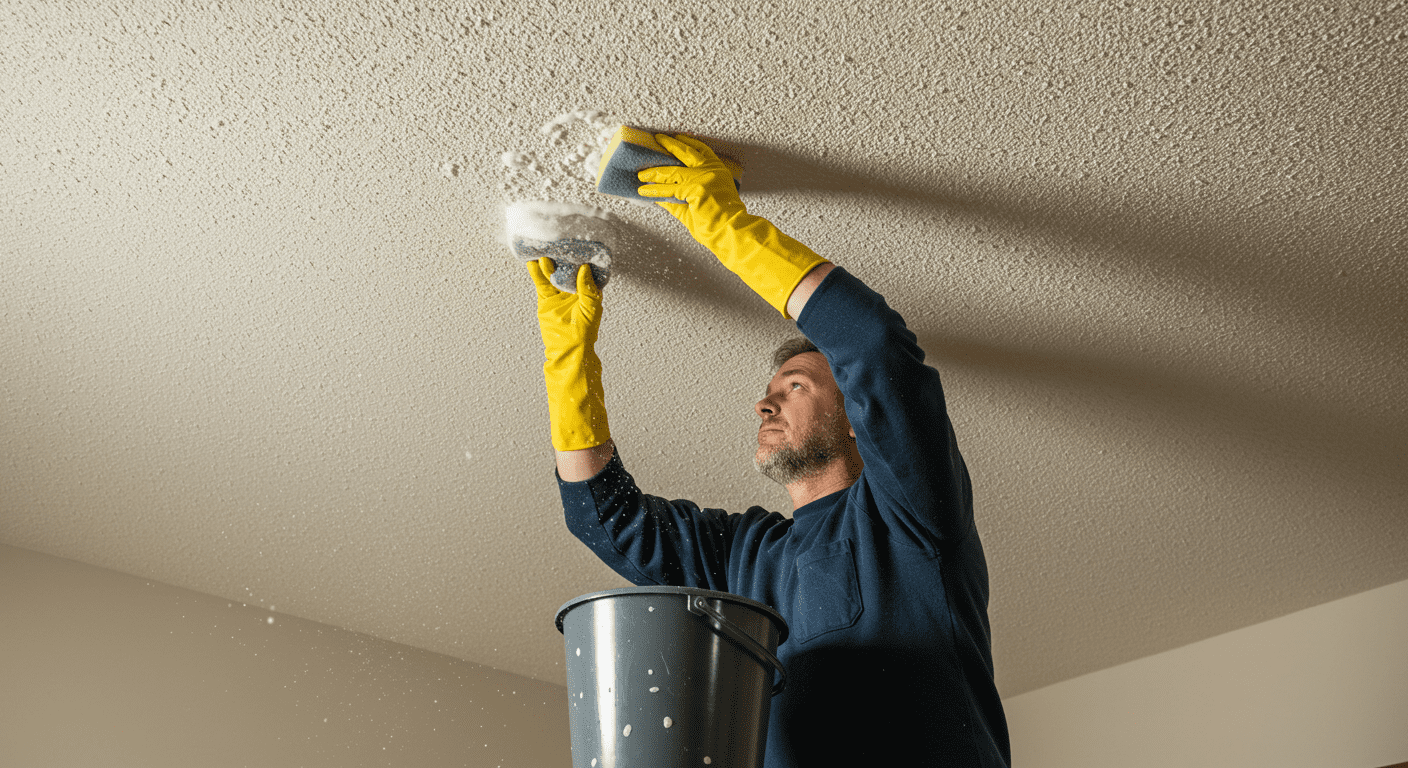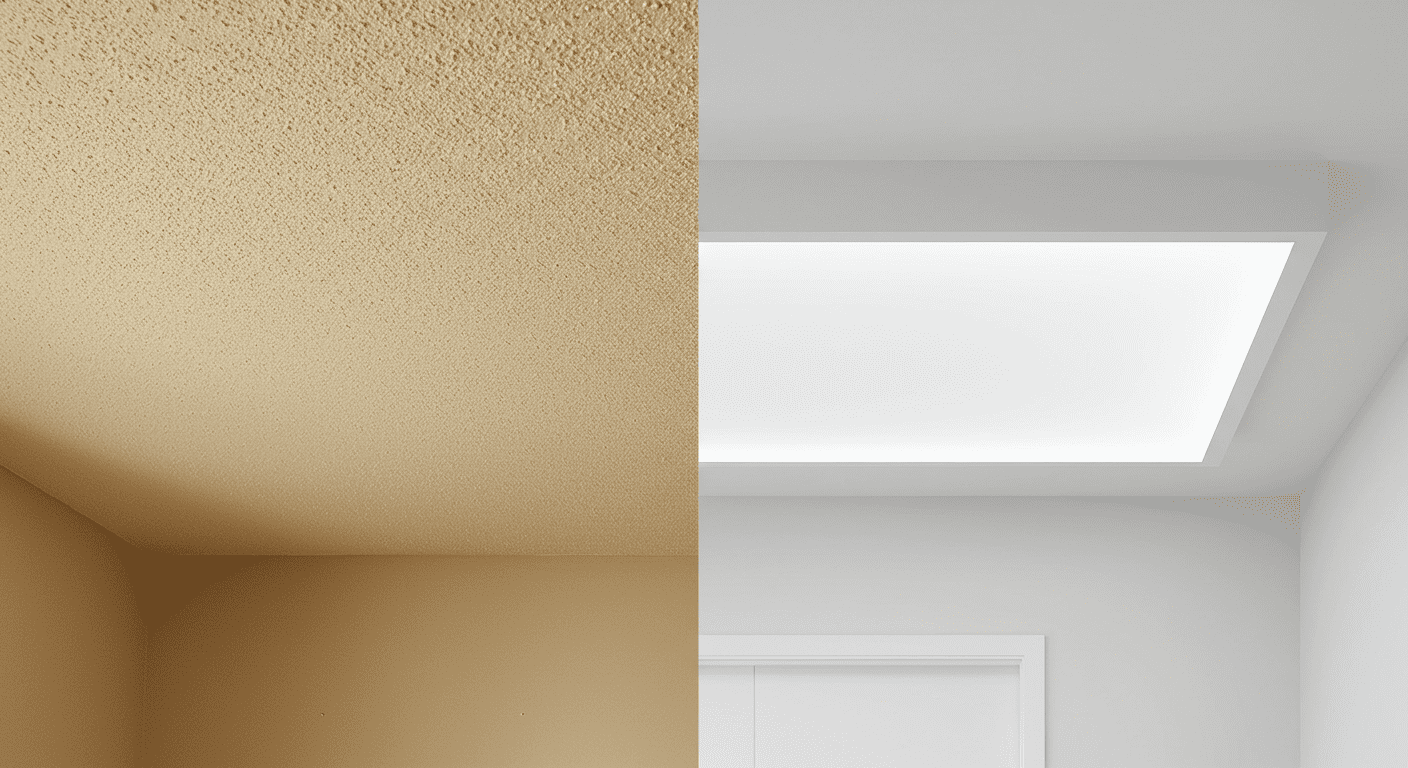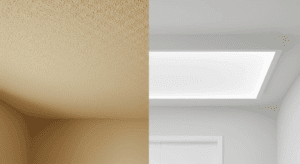Popcorn ceilings, also known as acoustic or textured ceilings, were once a popular design choice in homes, particularly during the mid-20th century. Their unique texture and practical benefits made them a staple in residential properties. However, as design trends evolved, their popularity waned, leaving many homeowners questioning their purpose and relevance in modern times. This article delves into the purpose of popcorn ceilings, their benefits, drawbacks, and the modern alternatives available today.
What Are Popcorn Ceilings?
Popcorn ceilings are characterized by their bumpy, textured appearance, resembling popcorn or cottage cheese. This design was achieved by spraying a mixture of drywall compound, Styrofoam, and other materials onto the ceiling surface. Popularized in the 1950s through the 1980s, these ceilings were a common feature in residential properties.
The primary reason for their widespread use was their practicality. Popcorn ceilings were an efficient and cost-effective way to cover imperfections in drywall or plaster. Additionally, their textured surface offered acoustic benefits, making them ideal for homes in noisy neighborhoods or multi-story buildings.
Benefits of Popcorn Ceilings
Cost-Effectiveness and Installation Ease
One of the most significant advantages of popcorn ceilings was their affordability. Compared to smooth ceilings, the materials and labor required for popcorn ceilings were minimal. Contractors could quickly apply the texture, saving both time and money for homeowners.
Sound Absorption Qualities
Popcorn ceilings were often referred to as “acoustic ceilings” due to their sound-dampening properties. The textured surface helped reduce noise levels, making them a practical choice for apartments, offices, and multi-story homes. This feature was particularly beneficial in areas with high foot traffic or thin walls.
Concealing Imperfections in Drywall
Another notable benefit was their ability to hide imperfections. Uneven surfaces, cracks, and other flaws in the ceiling were easily masked by the textured finish. This made popcorn ceilings a go-to solution for older homes or properties with structural inconsistencies.
Drawbacks of Popcorn Ceilings
Outdated Aesthetic Appeal
While popcorn ceilings were once trendy, they are now considered outdated. Modern homeowners often prefer sleek, smooth ceilings that align with contemporary design trends. The bumpy texture of popcorn ceilings can make a room feel dated and less visually appealing.
Maintenance Challenges and Cleaning Difficulties
Maintaining popcorn ceilings can be a daunting task. Their textured surface tends to trap dust, cobwebs, and other debris, making cleaning a challenge. Additionally, any attempts to clean or repair the ceiling can result in the texture flaking off, leading to further maintenance issues.

Health Concerns: Asbestos and Indoor Air Quality
One of the most significant concerns with popcorn ceilings is the potential presence of asbestos. Before the 1980s, many popcorn ceiling mixtures contained asbestos, a hazardous material linked to respiratory issues and diseases like mesothelioma. Homeowners with older properties are advised to conduct asbestos testing before attempting any renovations. For more information on asbestos safety, consult reliable sources or professional services.
Modern Alternatives to Popcorn Ceilings
Smooth Ceilings: A Contemporary Choice
Smooth ceilings have become the preferred choice for modern homeowners. Their clean and sleek appearance complements contemporary interior designs, making spaces feel more open and inviting. Removing popcorn ceilings and opting for a smooth finish can significantly enhance a home’s aesthetic appeal.
Benefits of Ceiling Removal and Renovation
Removing popcorn ceilings not only improves the visual appeal of a home but also eliminates potential health risks associated with asbestos. Renovating ceilings can also provide an opportunity to address underlying structural issues, ensuring a safer and more durable living environment.
Enhancing Home Value and Aesthetics
Investing in modern ceiling alternatives can increase a property’s market value. Potential buyers are often deterred by outdated features like popcorn ceilings. By upgrading to smooth or other modern ceiling options, homeowners can attract more buyers and secure better offers.
For homeowners considering renovations, exploring comprehensive services like Comprehensive Crawlspace Encapsulation Services in Sayreville, NJ can further enhance the safety and value of their property.
Conclusion
Popcorn ceilings served a practical purpose during their heyday, offering cost-effective solutions for sound absorption and concealing imperfections. However, their drawbacks, including outdated aesthetics, maintenance challenges, and health concerns, have led many homeowners to seek modern alternatives. By understanding the purpose and history of popcorn ceilings, homeowners can make informed decisions about their properties, ensuring both safety and style.
Whether you’re considering ceiling removal or exploring other home improvement options, staying informed is key to creating a comfortable and aesthetically pleasing living space.




